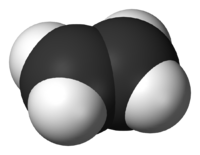
Photo from wikipedia
Metal-nitrogen-carbon (M-N-C) material with specifically coordinated configurations is a promising alternative to costly Pt-based catalysts. In the past few years, great progress is made in the studies of M-N-C materials,… Click to show full abstract
Metal-nitrogen-carbon (M-N-C) material with specifically coordinated configurations is a promising alternative to costly Pt-based catalysts. In the past few years, great progress is made in the studies of M-N-C materials, including the structure modulation and local coordination environment identification via advanced synthetic strategies and characterization techniques, which boost the electrocatalytic performances and deepen the understanding of the underlying fundamentals. In this review, the most recent advances of M-N-C catalysts with specifically coordinated configurations of M-Nx (x = 1-6) are summarized as comprehensively as possible, with an emphasis on the synthetic strategy, characterization techniques, and applications in typical electrocatalytic reactions of the oxygen reduction reaction, oxygen evolution reaction, hydrogen evolution reaction, CO2 reduction reaction, etc., along with mechanistic exploration by experiments and theoretical calculations. Furthermore, the challenges and potential perspectives for the future development of M-N-C catalysts are discussed.
Journal Title: Advanced materials
Year Published: 2021
Link to full text (if available)
Share on Social Media: Sign Up to like & get
recommendations!